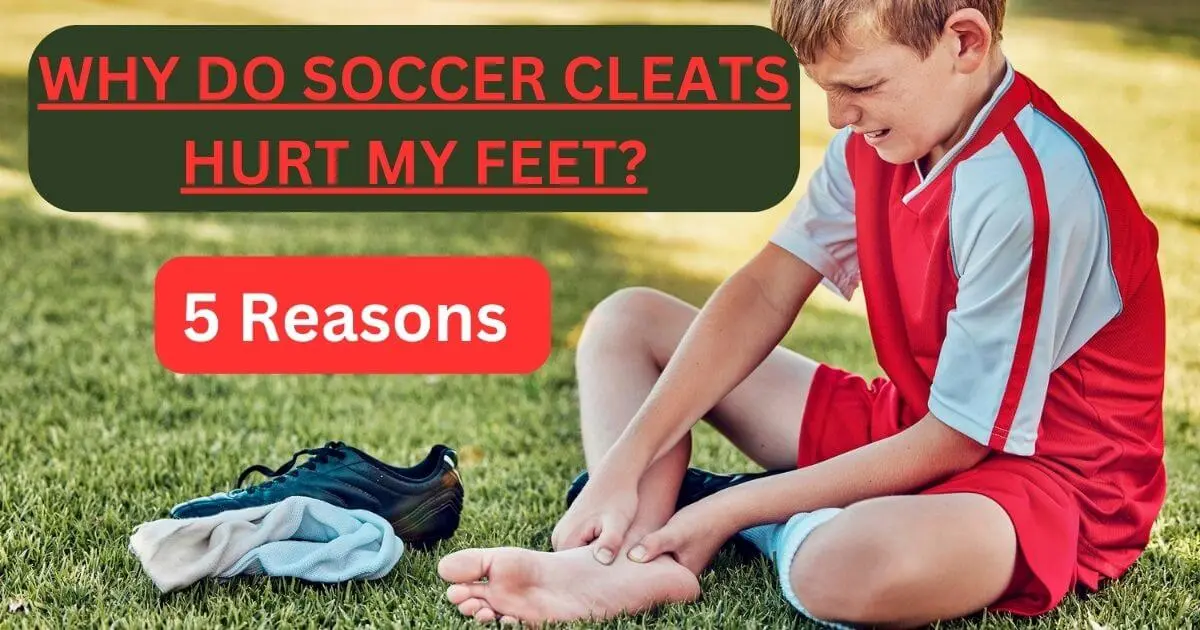It’s normal to feel a little discomfort and some unusual foot pain in soccer shoes or any type of athletic shoe when the shoe is brand new. But you should know why do soccer cleats hurt my feet.
The main reason for this is that new soccer shoes are a tight fit and need some time to adapt to your feet.
In this article, we will discuss five important reasons why your feet hurt in soccer cleats. And I will also tell you how you can solve this problem.
Table of Contents
Five important reasons why soccer cleats hurt my feet?
Whether you are a professional soccer player or just enjoy the game for fun, one experience that will impact you is dealing with foot pain in your soccer cleats. Below are five important factors to help you determine the right cleats and reduce your foot pain.
1. Fit
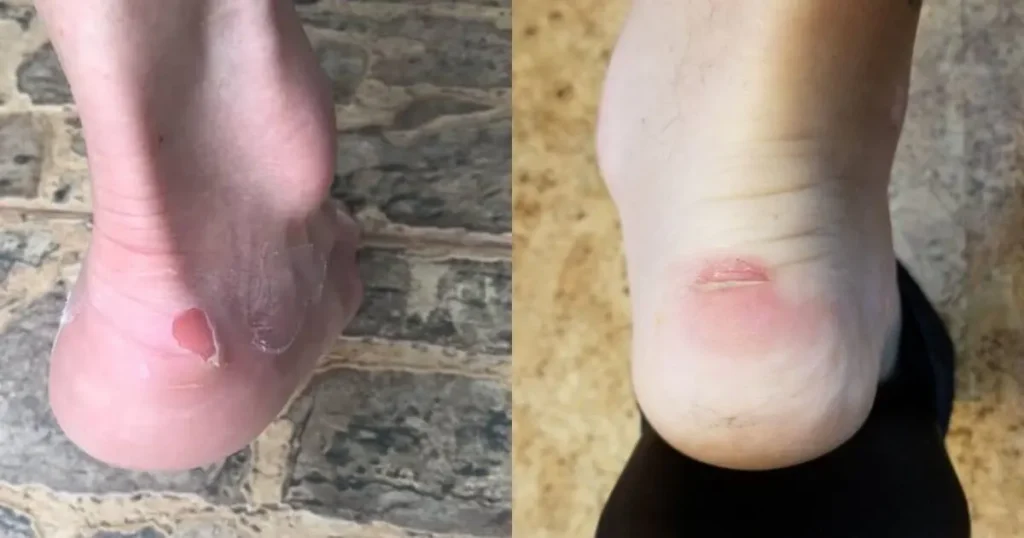
Fit is everything when we talk about soccer cleats if your soccer shoes are too small, Then you will find it very difficult to play with shoes on and run with shoes on.
Likewise, if your shoes are too loose, you may be in danger of slipping while playing and this will definitely hamper your game.
We always recommend choosing the current shoe size, a shoe that fits your feet well should ensure that the shoe is not too tight and not too loose.
2. Shape
Shape is another important factor in determining the right soccer cleats for you. Not everyone has the same foot shape, but most soccer cleats companies make different types of shoes, so choosing the right one for you is a very important matter.
A few things to keep in mind when you’re shopping for a soccer shoe are whether or not you can move your toes very well inside the shoe.
Because fitting the shoe to your foot size is often a problem, you need to take care of it and you will realize another thing is that the shoe is not too tight and too loose after you wear it.
3. Socks
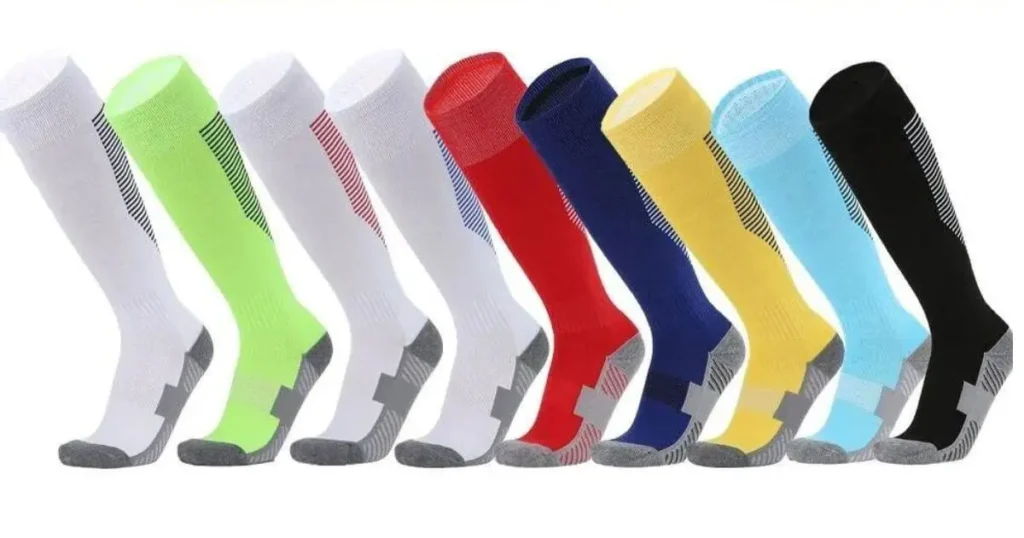
I have seen people neglect his socks a lot when he plays soccer. A sock plays a very important role in making your soccer game more comfortable.
Sock creates a separate layer between your foot and the inside of the shoe, reducing the chance of any pain in your feet.
An ideal sock creates a grip on your feet and inside your shoes so that you can easily run and perform well in sports.
Be sure to check your socks before you play to make sure your socks don’t get ripped or softened.
A sock you can’t use for a long time. Socks get worn out after a few matches and don’t work as well as before. To reduce the pain in your feet, you can fairs try changing a sock.
4. Stud Pressure
You must have noticed when using soccer shoes that there are many studs under the shoes that support your weight. There are several different types of soccer cleats. The stands of soccer cleats are different, such as the instants are sometimes made of iron, plastic, or rubber.
There are different types of soccer shoes in the market like firm ground, soft ground, artificial ground, and indoor ground, each of these shoes is designed to play on different fields.
I have seen a lot of people who use indoor soccer shoes on turf ground which will definitely leave you prone to injury and you will likely get sore feet. You must select the shoes according to the field you are playing on.
5. Weather
Your weather must be considered if your shoe is not covered by ACC technology. ACC means All Conditions Control. If your shoes are equipped with ACC technology, then you can play safely in any weather.
In most winter climates when you play football in normal cleats you will find that you have to use two cleats if you are not performing very well the cleats and therefore your feet are more likely to hurt.
This ACC technology warms your feet during the winter and makes your game even more comfortable when mixed with the weather.
When you take off your shoes and play in the field during very hot weather, you will find that the moisture soaks your feet from the bottom, which is very uncomfortable and causes your feet to ache.
How to reduce injuries of soccer cleats?
When you try on a new pair of soccer cleats, your feet may feel sore because the shoe is a bit stiff. It may take some time for the shoe to take the shape of your foot, so you need to break the shoe to continue playing, but do so little by little.
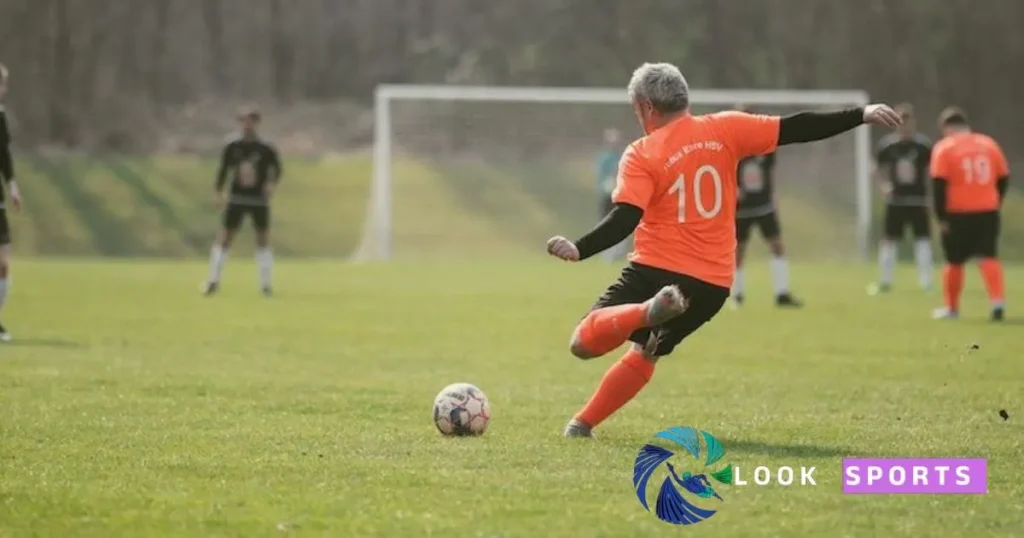
Below are some important guidelines so that you can do it more easily.
Wear them gradually:
Start wearing your new soccer shoe for a short time during practice and gradually increase the time as it becomes a habit.
Avoid using this shoe for long periods of time or in competitive matches until the shoe has adjusted to the shape of your feet.
Use the right socks:
Having the right shoes along with the right socks becomes very important while playing soccer. It will help your feet adapt to the right amount of cushioning and help absorb moisture from your feet when worn.
Use high-quality shoelaces:
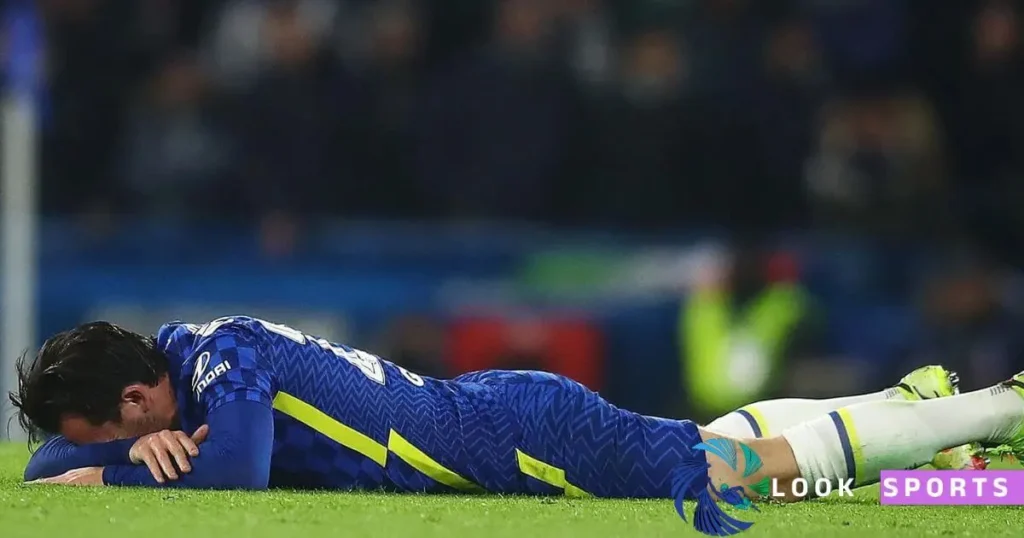
I have seen many players make the mistake of not tying the shoe laces properly and going down the field, this will loosen the shoe laces after a while and can disrupt your game.
In addition to player mistakes, this problem is often caused by the shoe laces used not being made of the right material.
Use the correct shoe laces for your shoes to help keep your shoes on your feet and prevent them from slipping.
Be Patient:
If you’re a beginner player or just taking up the sport for fun, it’s normal to have sore feet after wearing soccer shoes.
Now shoes may take some time to adjust to your feet so give yourself time and gradually build up to you’re using the soccer cleats.
Conclusion
Soccer cleats are essential for good performance on the field, if they don’t fit properly or don’t provide enough support and lack of cushioning, it can cause discomfort.
Take proper care of your feet by choosing the right size and quality of soccer shoes and you will be able to avoid unnecessary injuries easily.
If you experience persistent pain or blisters that do not improve over time, this may be a sign that your clips do not fit your feet or are not suitable for your feet.
In this case, you need to change your soccer cleats and consult a footwear professional.
Why do my new soccer cleats hurt my feet?
New soccer cleats are a bit stiffer and these cleats stick to your feet will and are tight, causing blisters on your feet and pain in your feet. Give your feet some time to adjust to the new shoes as the shoe will adjust to your foot size.
Can wearing soccer cleats prevent injuries?
Yes of course the right soccer cleats will really protect you from many injuries. These shoes will protect your feet and help you increase your speed and perform better in sports.
How to choose the right soccer shoes for my feet?
First measure your feet to determine what size shoe you will need. You can buy cleats of that size from a local store but one thing to note is that the shoe should fit your foot snugly so that you can wiggle your toes inside the shoe.

